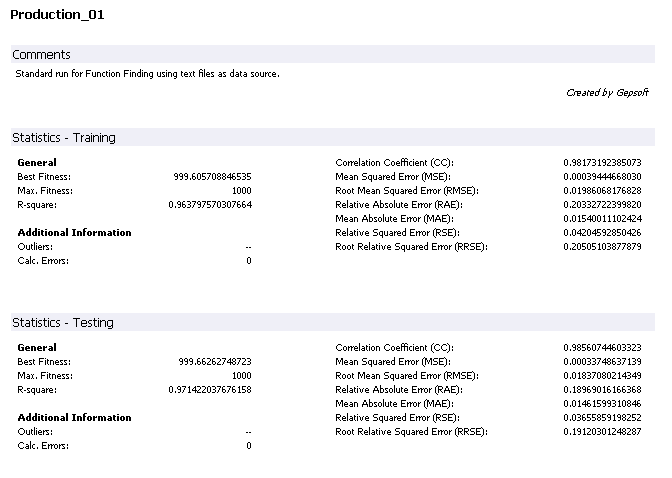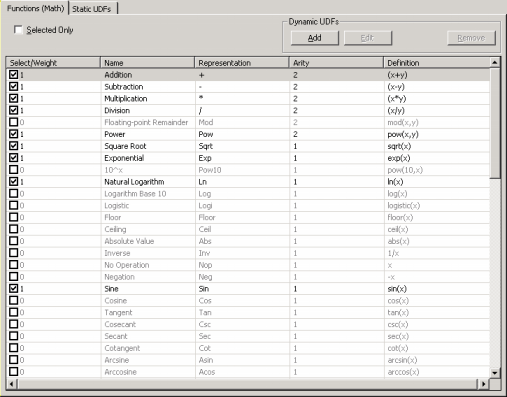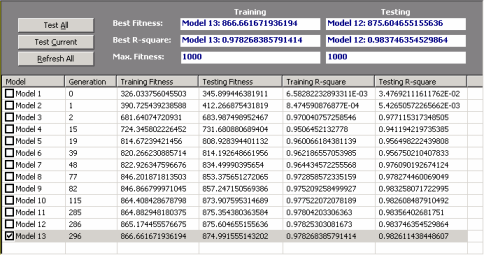| The first step in using APS is launching it and opening existing files or creating new ones.
To Start Automatic Problem Solver 3.0
In the Report Panel you can find relevant information concerning
the run, including all the settings used in the run, the statistical evaluation of the best-of-run or active
model (highlighted in yellow in the History), and a detailed account of the evolutionary history of the run.
In the Settings Panel you can customize the General Settings, the Fitness Function, the Genetic Operators, and the Numerical Constants by selecting the corresponding tab.
In the Fitness Function Tab you can choose one of the 11 APS pre-defined fitness functions or design and test a fitness function of your own.
In the Genetic Operators Tab you can change the degree of genetic modification you want to use during evolution by choosing the kind of genetic operators and their corresponding rates.
In the Numerical Constants Tab you can activate the algorithm that enables the use of random numerical constants and customize both the type and range of your constants, the number of constants per gene, and also choose the genetic operators especially designed to fine-tune the random constants.
In the Functions Panel you choose the mathematical functions and rules APS will use to model your data.
In the Run Panel you can create and optimize models.
In the History Panel you can explore the best ancestors of the evolved model.
In the Results Panel you can evaluate the evolved model by analyzing its output both on the training and testing data.
In the Model Panel you can see the mathematical intricacies of the evolved model in several programming languages (C, C++, C#, Fortran, Java, Java Script, VB.Net, and Visual Basic) and representations (Expression Trees and Karva Notation).
|













